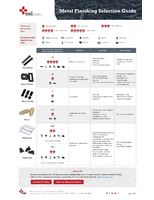Indra to Design Radar System to Detect Objects in Space for ESA
Share:
o The company has been awarded three important contracts by the European Space Agency (ESA) which amount to 5.4 M
o It will design a cutting-edge radar system, capable of detecting objects at 2,000 km of the Earth
The European Space Agency (ESA) commissioned Indra the design of the future radar system for the surveillance of objects close to the Earth as well as the development of its working prototype. The company will also determine its location and develop the simulator of the system. The total amounts to 5.4 M.
The contracts strengthen Indra's role within the preparatory stage of the Space Situational Awareness, SSA, promoted by ESA. The initiative seeks to increase security of space missions in the event of collisions with orbiting objects, magnetic storms or meteors.
The working prototype will prove, in a real scenario, its capacity to detect objects in Low Earth Orbits (LEO) between 200 and 2,000 km of altitude. For this reason Indra will design one of the most advanced radar systems, capable of operating at such distances.
The study of feasibility and the tests will last two years, that is, until 2012. According to the results, the European Space Agency will lay the basis to build the definite detection network. The tests with the prototype will help determine the structure and amount of equipment so that costs can be estimated.
The other two contracts include the development of a radar simulator which will predict the radar's system performance and will be used to optimise its final design. Indra is also considering the locations for the optimisation of the future surveillance radar in Europe. The report will help ESA decide the location.
Indra's participation in the early stages of the initiative will contribute to maintain its competitive position in order to participate in other stages. Its role in this ambitious programme proves its experience and technical capacity.
The project is within the strategy of the European Union to gain further insight of the space environment by proprietary means which will undertake surveillance of nearby orbits and will monitor more distant zones. For this purpose, different technologies such as radars and optic telescopes among others will be employed.
Knowing the trajectory of orbiting objects accurately is of the utmost importance as the consequences of a collision with a satellite can be quite damaging.
Several events which occurred during the last years have increased the amount of this type of waste. For instance, in 1996 a French defence satellite was hit by a fragment of Arienne rocket; in 1997 a Chinese satellite was destroyed in space so that it didn't re enter the Earth to prevent risks; in 2009 a collision between two satellites which dispersed thousands of fragments. All these situations called for a system providing knowledge of the space in order to guarantee security of the missions by avoiding collisions and impacts.
The system will also offer the possibility to detect and followup objects coming from the outer space such as meteors. Besides this, it will help study the space weather since certain phenomena such as solar or magnetic storms affect electronic devices in space and on earth.
Indra is the premier Information Technology company in Spain and a leading IT multinational in Europe and Latin America. It is ranked as the first European company in its sector according to investment in R&D and is the second Spanish company in absolute value investments in R&D. In 2009 revenues reached 2,513 M of which a 40% came from the international market. The company employs more than 30,000 professionals and has clients in more than 100 countries.
In Spain it is the leading company in the space sector regarding development of ground segment solutions, specifically in Earth observation, satellite communications, navigation and control systems.




